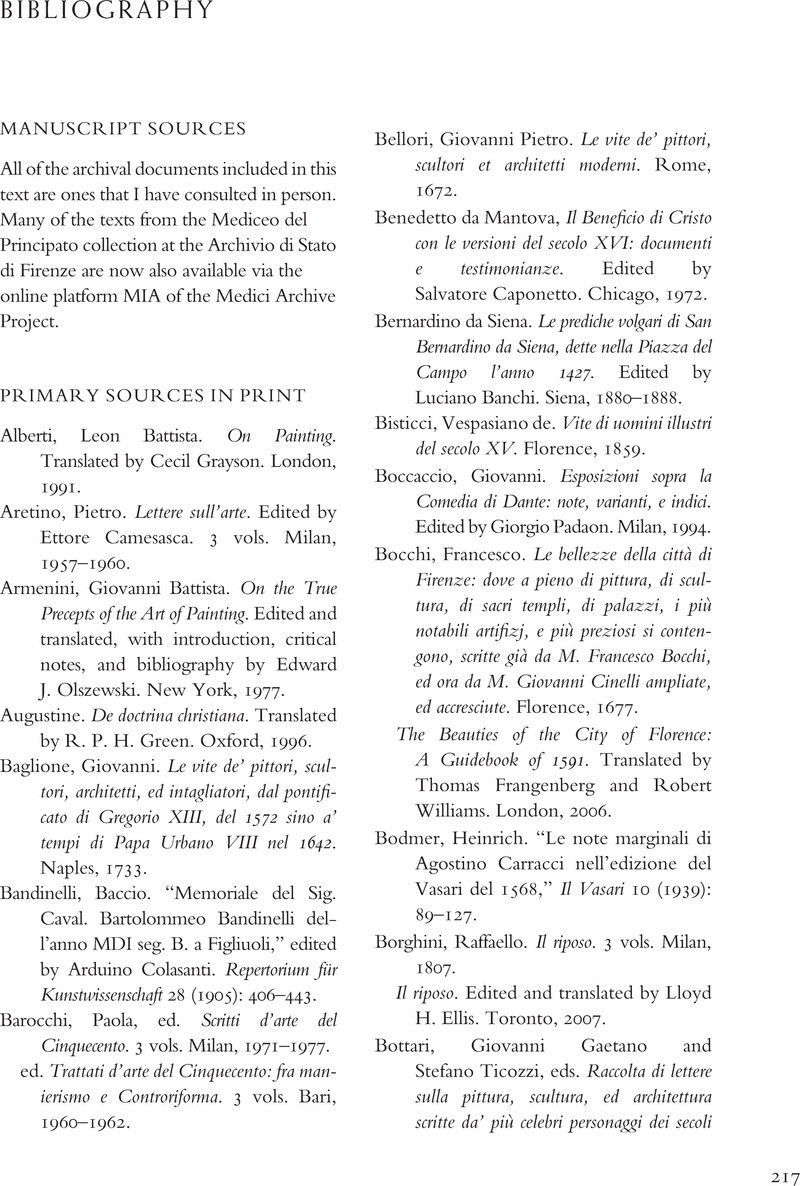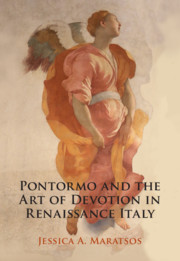Book contents
- Pontormo and the Art of Devotion in Renaissance Italy
- Pontormo and the Art of Devotion in Renaissance Italy
- Copyright page
- Contents
- Plates
- Illustrations
- Acknowledgments
- Abbreviations
- Introduction Drawing Devotion, Imitating Nature in Cinquecento Florence
- One Performing the Passion at the Certosa del Galluzzo
- Two Pictorial Theology and the Paragone in the Capponi Chapel
- Three Elusive Rhetoric at San Lorenzo
- Four A Pontormo Legacy in Florence?
- Notes
- Bibliography
- Index
- Plate Section (PDF Only)
- References
Bibliography
Published online by Cambridge University Press: 12 January 2022
- Pontormo and the Art of Devotion in Renaissance Italy
- Pontormo and the Art of Devotion in Renaissance Italy
- Copyright page
- Contents
- Plates
- Illustrations
- Acknowledgments
- Abbreviations
- Introduction Drawing Devotion, Imitating Nature in Cinquecento Florence
- One Performing the Passion at the Certosa del Galluzzo
- Two Pictorial Theology and the Paragone in the Capponi Chapel
- Three Elusive Rhetoric at San Lorenzo
- Four A Pontormo Legacy in Florence?
- Notes
- Bibliography
- Index
- Plate Section (PDF Only)
- References
Summary

- Type
- Chapter
- Information
- Pontormo and the Art of Devotion in Renaissance Italy , pp. 217 - 251Publisher: Cambridge University PressPrint publication year: 2021



